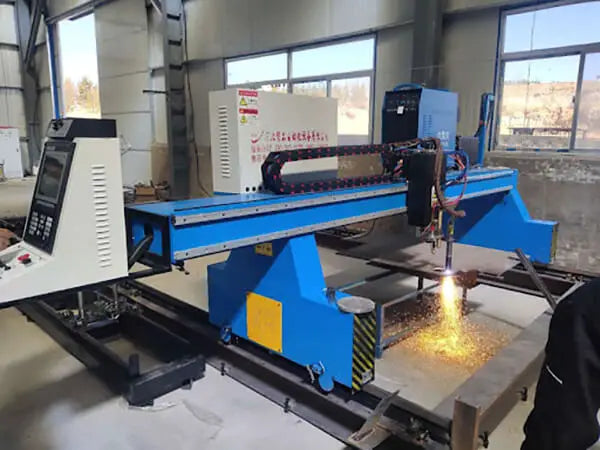With the continuous development of plasma cutting technology, the use of CNC plasma cutting machines is becoming more and more widespread.

The CNC plasma cutting machine is one of the main cutting and stamping equipment used for medium and small thickness sheets. It offers numerous benefits such as easy operation, high precision, high work efficiency and low labor intensity.
It is widely used in various sectors, including the chemical industry, automobile industry, machinery industry, railway transportation industry, among others.
When traditional cutting methods cannot cut tough materials, CNC plasma cutting machines come in handy.
In terms of cutting speed, when cutting medium and small thickness carbon steel plates, the CNC plasma cutting speed is faster than the traditional flame cutting speed, and the cutting surface remains smooth with minimal deformation at warm.
Furthermore, the CNC plasma cutting method is a more economical option than laser cutting.
Plasma Cutting Principle
A plasma cutter operates by ionizing a mixture of gases through a high-frequency arc. This ionized gas, or plasma, is then expelled from the cutting nozzle due to gas pressure.
The temperature of the plasma is extremely high, far exceeding the melting point of the material being cut.
This causes the material to melt quickly and the molten material is then expelled by the high pressure gas from the nozzle. This process produces a significant amount of smoke and molten slag.
Therefore, plasma cutters require dust and slag removal systems. By using different gas mixtures, plasma can cut metals of different materials and thicknesses, particularly excelling in cutting non-ferrous metals.
Choosing the Plasma Cutting Process
In the CNC (Computer Numerical Control) operation process with a plasma cutter, programming is the initial step. The machining process follows a pre-programmed sequence.
In this programming phase, factors such as cutting speed, cutting sequence and starting point play a key role in determining the quality of the cut.
Starting Point Selection
Ideally, the starting point of the cut should be at the edge of the sheet or within a previously cut seam. If the nozzle is too far from the material, it results in an incomplete cut, leading to unnecessary waste of material.
On the other hand, if the nozzle is too close, it could cause a short circuit. This not only damages the material and affects the quality of the cut, but can also damage the nozzle.
Choosing the cutting direction
The cutting direction must ensure that the final edge to be cut is mostly separated from the main material.
If it comes loose prematurely, the thin structure around the part may not withstand the thermal stress of cutting, causing the part to shift during the cutting process. This change can lead to dimensional inaccuracies, affecting the quality of the cut.
Selecting the cutting sequence
During programming, to maximize material utilization, the part is often nested within the sheet metal.
Thus, the cutting sequence dictates the order of material removal. Generally, the sequence follows the principle of cutting smaller pieces before larger ones and cutting internal contours before external ones.
Otherwise, the stress generated when cutting internal contours or smaller parts can lead to stress concentration, resulting in a scrapped part.
Choosing the cutting speed
Cutting speed selection is influenced by several factors such as material type and thickness, nozzle design, cutting current and chosen gas.
However, under the same power and conditions, a faster cutting speed results in a larger chamfer on the workpiece.
Therefore, the nozzle must be perpendicular to the material during cutting to facilitate rapid slag removal. To ensure efficiency, the maximum cutting speed must be chosen without compromising the quality of the cut.
Cutting Table Optimization
The cutting table of the cutting machine is supported by several diaphragms. As illustrated in Figure 1, the distance between two diaphragms is 110 mm.
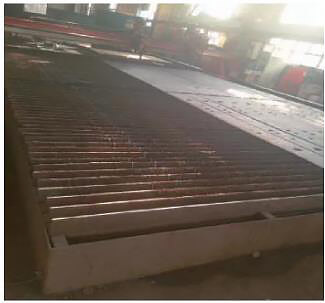
Fig. 1 CNC plasma cutting machine with cutting table
When cutting small parts, the part often ends up between the diaphragms, making it difficult to retrieve. The diaphragm itself is a straight flat steel plate measuring 8 mm × 190 mm × 4600 mm. Due to frequent cuts, the lower diaphragm accumulates a significant amount of oxide slag, which can negatively impact the quality of the cut. As a result, it requires frequent cleaning or replacement to maintain normal cutting operations.
Cutting Table Optimization and Implementation Scheme
In industry, product structures and batches are often not fixed, leading to the use of grouping to save materials. This involves combining the typographic composition of large and small materials.
Currently, we need to address the issue of how to increase the utilization rate of plasma cutting machines and extend the service life of cutting benches through plasma bench process innovation.
To address this challenge, we first analyze and categorize existing blanking products. We then select the smallest cutting piece, determine its size, and design a new bench assembly according to site conditions, as shown in Figure 2.
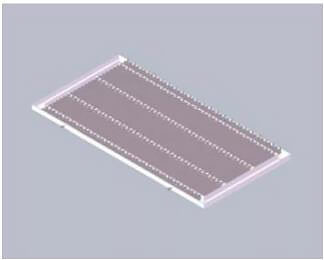
Fig. 2 Table model after optimization of CNC plasma cutting machine
(1) Specific regime.
- The platform has a size of 1500mm × 3000mm and can be combined with multiple platforms.
- The external structure of the platform is made of 4mm plates that are bent into U-shaped parts and welded into a rectangular structure. This design guarantees the rigidity of the structure and prevents deformations during lifting.
- Inside the frame there are 2-3 V-shaped pieces that are folded into 4mm plates and folded lengthwise into the frame. Additionally, a 3.5mm wide notch is cut in the longitudinal beam to facilitate insertion of the diaphragm.
- The diaphragm is made of a 1500 mm × 200 mm plate with one side cut into a serrated structure.
(2) Specific implementation process.
- Design the length, width, height and spacing of cutting table partitions based on equipment parameters and the size of cutting parts required.
- Make the cutting bench according to the project drawing.
- All cutting table parts are cut at once using a CNC cutting machine, resulting in accurate sizes and convenient diaphragm replacement.
- The cutting table frame is programmed and bent using a CNC press brake, resulting in accurate positioning size and good formability.
- Assemble, weld and build the cutting bench frame.
- Insert the diaphragm into the cutting table.
- Place the cutting table on the original cutting table. When cutting, place the material on the movable cutting table for cutting, as shown in Figure 3.
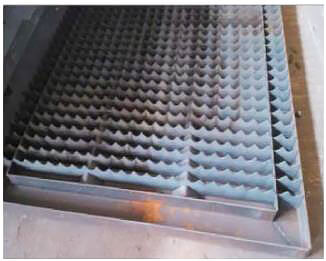
Fig. 3 Physical drawing of the work table after optimization of the CNC plasma cutting machine
Path optimization in the cutting process
During the cutting process, there is a relative movement between the machined part and the remaining material due to the effect of thermal expansion and cold contraction of the plate.
Relative motion can be categorized into three situations based on the difference between the weight of the machined part and the weight of the remaining material:
- When the weight of the machined part is greater than the weight of the remaining material, the machined part remains stationary while the remaining material moves relative to the platform. This does not affect the size of the machined part.
- When the weight of the machined part is less than the weight of the remaining material, the machined part moves relative to the platform while the remaining material remains stationary. This results in a certain deviation in the machined part.
- When the weight of the machined part is equal to the weight of the remaining material, both the machined part and the remaining material may move relative to the platform, which may affect the size of the machined part.
Practice has shown that the dimensional error of machined parts typically ranges from 0.3 to 4 mm due to the relative movement of the machined part or remaining material relative to the platform.
The cutting path on one side of the workpiece
Selecting a reasonable cutting process may result in varying degrees of deformation during the CNC plasma cutting process.
When cutting the plate shown in Figure 4, if point A is chosen as the starting point of the arc, the cutting sequence and direction should be: A → D → C → B → A (see Figure 4a).
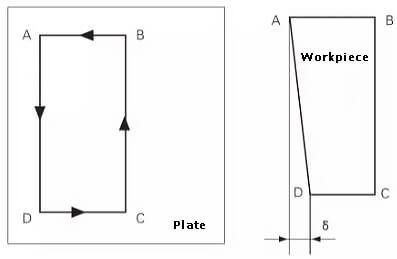
Fig. 4 Cutting path and deformation of one side of the workpiece
When section AD is cut and section DC is processed, the narrow residual material in section DC is linearly elongated due to the high temperature during cutting, causing section CB to deviate outward.
After cutting, the size of the DC section is reduced by δ (as shown in Fig. 4b). The value of δ is proportional to the size of the DC section.
If the cutting sequence A → B → C → D → A is selected, the workpiece can be separated from the motherboard through DA, which can effectively reduce the cutting deformation.
Deformation control of thin parts
When cutting the thin parts shown in Figure 5, following the sequence A→B→C→D→A, the expansion of section BC may prevent the expansion of section CD when cutting section DA.
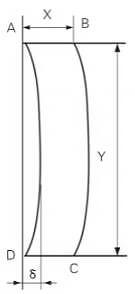
Fig. 5 Cutting thin pieces
After the cutting and cooling process, section DA must undergo more shrinkage than section BC to bend the part toward the DA side.
The amount of lateral bending δ depends on the length-to-width ratio Y/X of the machined part. As the length-to-width ratio increases, so does the amount of lateral bending δ.
When using two pairs for cutting, as shown in Figure 6, choose point A as the starting point of the arc and follow the cutting direction and sequence: A → B → C → D → E → A → F.
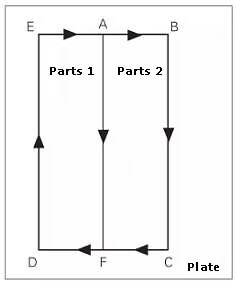
Fig.6 Paired cut of two thin pieces
When working on the DE section, removing it from the motherboard is comparable to halving the length-to-width ratio of the workpiece, resulting in a reduction in the amount of lateral bending.
When cutting the AF section, the expansion and contraction on both sides of the part are uniform, leading to a considerable reduction in the deformation δ of the slender parts.
Technology for cutting parts with special shapes
For cutting special parts (Fig. 7), the following cutting processes can be selected according to the above processing methods and different special-shaped parts.
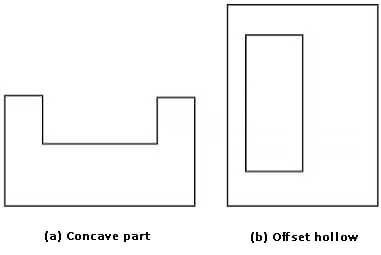
Fig.7 Cutting special parts
(1) For concave parts, two paired cutting methods are adopted.
First cutting the inner edge, then cutting the outer edge and finally separating the two parts from the outside to the inside.
The cutting sequence is shown in Fig.
The inner edge: A1 → B1 → C1 → D1 → A1;
Outside: A → B → C → D → A and finally E → F, H → G.
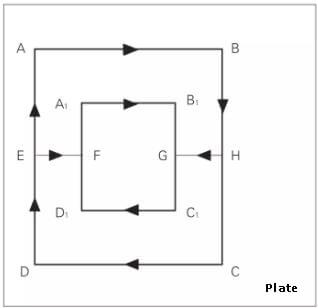
Fig.8 Paired cut of two concave parts
(2) For offset hollow parts, two pieces must be cut in pairs, and finally the two pieces must be separated.
The cutting sequence is shown in Fig.
The inner side: A1 → B1 → C1 → D1 → A1, A2 → B2 → C2 → D2 → A2
The outer side: A → B → C → D → A and finally E → F.
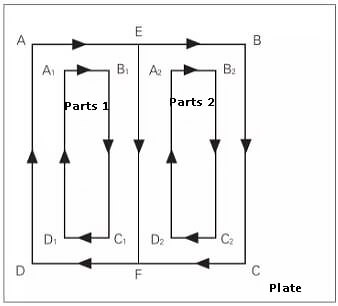
Fig. 9 Paired cutting of two offset hollow pieces
Plasma Equipment Optimization
During the air plasma cutting process, the upper part of the electrode core undergoes a high-temperature oxidation reaction with oxygen in the air, so electrode wear is inevitable.
The useful life of an electrode is related to the number of arc starts; Under the same conditions, the more the arc starts, the more the electrode wears out. Frequent arc initiation significantly reduces electrode life.
However, the continuous cutting process reduces the number of starting points for parts with non-common edges, so that parts with shared edges have only one cutting start point.
This reduces the number of arc starts during cutting, thus increasing electrode life.
Conclusion
Process innovation has several beneficial effects. Firstly, it greatly improves the utilization rate of the plasma cutting machine. Secondly, replacing the worktable diaphragm is convenient and reduces the replacement rate by half, thereby reducing the replacement cost. Thirdly, it can meet the cutting requirements of small parts.
Currently, this process innovation is widely used in cutting metal structures for passenger railway carriages. As each car has many small parts that need to be cut and blinded, this innovation improves work efficiency and saves costs.
When using plasma cutting, the following problems must be considered: the deformation law and the influence of cutting parts on CNC plasma cutting machines must be analyzed. Before cutting, appropriate plate leveling treatment must be carried out, and the plate must be fixed to prevent movement of the machined parts during cutting.
When compiling the cutting program, a reasonable cutting process should be selected to separate the maximum size surface of the workpiece from the motherboard. For cutting thin or special-shaped parts, control methods such as paired cutting of two parts can effectively prevent or reduce the deformation of cutting parts.
Compared to flame cutting, CNC plasma cutting is superior in terms of cutting quality and benefits in the processing industry. It can cut all types of metals with different working gases, especially non-ferrous metals.

